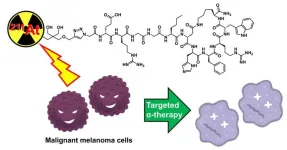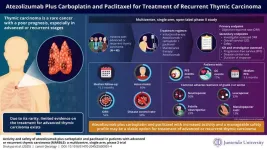Those with fair skin, a history of sun exposure or tanning bed use, and a genetic predisposition, are at higher risk. Key barriers to prevention include a lack of awareness, cultural preferences for tanned skin, and limited access to sun protection.
A study by researchers at Florida Atlantic University’s Charles E. Schmidt College of Medicine is one of a few to explore associations between reported number of sunburns and sociodemographic characteristics, in addition to examining prevalence of protective skin behaviors adopted by the U.S. adult population in a nationally representative sample. According to the American Academy of Dermatology, experiencing five or more blistering sunburns between ages 15 and 20 increases one’s melanoma risk by 80% and nonmelanoma skin cancer risk by 68%.
Using data from the U.S. National Cancer Institute’s 2022 Health Information National Trends Survey 6 (HINTS 6), researchers selected questions focused on respondents’ confidence in their health, perceived cancer risk, and worry about getting diagnosed with cancer, as well as their sunburn experiences over the past year. Sociodemographic factors that were studied included age, gender, occupational status, marital status, educational level, Hispanic origin, race and income due to their potential link to skin cancer risk.
Among 6,252 participants surveyed, when asked how confident they felt about their ability to take good care of their own health, most respondents felt either very confident (44%) or completely confident (27.3%). Findings, published in the American Journal of Lifestyle Medicine, also showed most respondents had moderate concerns about skin cancer risk. Only 9.1% reported being extremely worried, while the majority were either somewhat (26.6%) or slightly (25.6%) concerned.
For sunburn and skin protection, 67.6% reported no sunburns in the past year, while 30.3% had 1-5 sunburns. Additionally, 6.4% reported consuming alcohol while sunburned, a known risk factor for increased sunburn incidence. Activities like drinking alcohol, working outside or swimming were common among those who reported sunburns.
Using multinomial regression analysis, statistically significant associations were reported between the number of sunburns and sociodemographic factors. Adults (over 40) had lower sunburn risks, as did women. Disabled, unemployed, and multi-occupation participants reported fewer sunburns. Married or partnered individuals had higher risks of sunburn, while divorced or single participants had lower risks. Higher education levels, being Hispanic, Black, Asian or of mixed race were linked to lower sunburn risks. Higher income groups had significantly higher risks of sunburns, with the highest income group being more than four times more likely to report a sunburn.
“Social determinants such as race/ethnicity, sex, income and employment status are closely linked to sunburn and skin cancer risk,” said Lea Sacca, Ph.D., senior author and an assistant professor in the Department of Population Health and Social Medicine, within the Schmidt College of Medicine. “While Hispanics and Black Americans generally report lower rates of sunburn, Hispanics often perceive greater benefits of UV exposure, which increases their risk. Factors such as sex, education, and income also influence sunscreen use, with lower use observed among Black Americans and Hispanic Americans. However, within these groups, women with higher education and income are more likely to use sunscreen. Interestingly, higher income is associated with more frequent sunburns.”
Skin cancer includes three main types: basal cell carcinoma, squamous cell carcinoma and melanoma. Basal cell carcinoma is the most common and least aggressive, typically appearing as a shiny, pearly bump or pinkish patch, often on sun-exposed areas. Squamous cell carcinoma usually appears as red, scaly patches or open sores and can spread to other parts of the body if not treated early. Melanoma, the most dangerous form, develops in pigment-producing cells (melanocytes) and can appear as a new mole or changes to an existing one. It is highly aggressive and can spread quickly to other organs if not caught early.
“Understanding perceptions of skin cancer risk and the prevalence of protective behaviors is vital to reducing the likelihood of developing skin cancer, particularly among vulnerable groups,” said Madison Etzel, first author and a second-year medical student in the Schmidt College of Medicine. “Our study underscores the importance of raising awareness about skin cancer susceptibility as we found that all sociodemographic factors were significantly linked to the number of reported sunburns in the past year. Future research should explore how additional social determinants of health influence sunburn incidence and prevention behaviors. A deeper understanding of these factors is critical to addressing the widespread harms of skin cancer in U.S. adults.”
According to the American Cancer Society and other health organizations, practicing sun safety and skin awareness is vital to preventing skin cancer. Regularly applying a broad-spectrum sunscreen with an SPF of 30 or higher, especially when spending time outdoors, and reapplying every two hours is essential as a first step for skin cancer prevention. Avoiding direct sunlight, particularly between 10 a.m. and 4 p.m., when UV rays are strongest, and seeking shade whenever possible are also additional preventive strategies to consider to reduce the risk of this disease. Moreover, protecting skin further by wearing long-sleeve clothing, wide-brimmed hats and sunglasses with 100% UVA/UVB protection has also been recommended. It’s also crucial to avoid tanning beds, as they increase the risk of skin cancer.
Regular self-exams of the skin for any unusual moles or changes, along with professional skin screenings by a dermatologist, can help with early detection. Surfaces like water, sand and snow also can reflect UV rays, so reapply sunscreen more frequently in these environments. Finally, staying hydrated supports skin health and resilience against UV damage.
Study co-authors are Nada Eldawy; Sahar Kaleem; Austin Lent; Adrienne Dean; Ayden Dunn; Paige Brinzo; and Samantha Jimenez, all medical students in the Schmidt College of Medicine.
- FAU -
About the Charles E. Schmidt College of Medicine:
Florida Atlantic University’s Charles E. Schmidt College of Medicine is one of approximately 159 accredited medical schools in the U.S. The college was launched in 2010, when the Florida Board of Governors made a landmark decision authorizing FAU to award the M.D. degree. After receiving approval from the Florida legislature and the governor, it became the 134th allopathic medical school in North America. With more than 170 full and part-time faculty and more than 1,300 affiliate faculty, the college matriculates 80 medical students each year and has been nationally recognized for its innovative curriculum. The college offers M.S. (thesis and non-thesis) and Ph.D. programs in biomedical science, along with a certificate in genomics and precision medicine. Taught by top researchers, the curriculum combines cutting-edge coursework with hands-on learning, preparing graduates for careers in medicine, research, industry, and academia. To further Florida Atlantic’s commitment to increase much needed medical residency positions in Palm Beach County and to ensure that the region will continue to have an adequate and well-trained physician workforce, the FAU Charles E. Schmidt College of Medicine Consortium for Graduate Medical Education (GME) was formed in fall 2011 with five leading hospitals in Palm Beach County. The consortium currently has five Accreditation Council for Graduate Medical Education (ACGME) accredited residencies including internal medicine, surgery, emergency medicine, psychiatry, and neurology, and five fellowships in cardiology, hospice and palliative care, geriatrics, vascular surgery, and pulmonary disease and critical care medicine. The college also manages the Florida Atlantic University Medical Group, offering comprehensive primary care, and the Marcus Institute of Integrative Health specializes in integrative pain management, precision therapies, and mental health. A 2023 partnership with Broward Health expands academic medicine, clinical training, and research opportunities.
About Florida Atlantic University:
Florida Atlantic University, established in 1961, officially opened its doors in 1964 as the fifth public university in Florida. Today, Florida Atlantic serves more than 30,000 undergraduate and graduate students across six campuses located along the Southeast Florida coast. In recent years, the University has doubled its research expenditures and outpaced its peers in student achievement rates. Through the coexistence of access and excellence, Florida Atlantic embodies an innovative model where traditional achievement gaps vanish. Florida Atlantic is designated as a Hispanic-serving institution, ranked as a top public university by U.S. News & World Report, and holds the designation of “R1: Very High Research Spending and Doctorate Production” by the Carnegie Classification of Institutions of Higher Education. Florida Atlantic shares this status with less than 5% of the nearly 4,000 universities in the United States. For more information, visit www.fau.edu.
END






